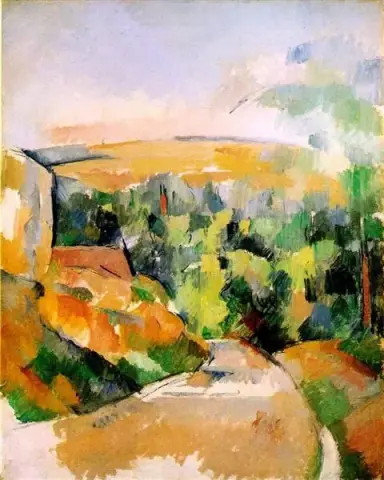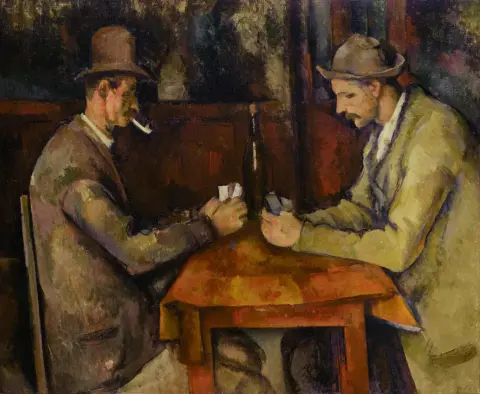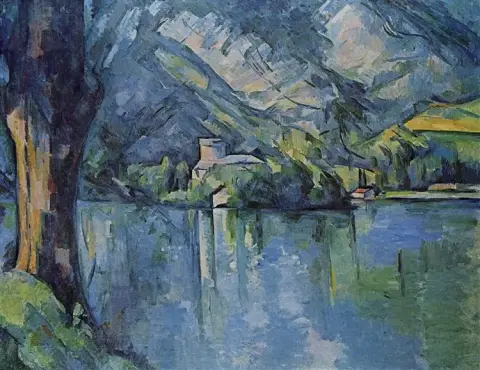

Hand painted reproductions of Paul Cézanne
Paul Cézanne: The Father of Modern Art
Paul Cézanne (1839–1906) was a French painter whose revolutionary approach to form and color laid the groundwork for modern art. Widely regarded as a bridge between 19th-century Impressionism and 20th-century Cubism, Cézanne's works broke away from traditional representation and explored new possibilities in composition, perspective, and structure. His profound influence on subsequent generations of artists earned him the title “The Father of Modern Art.”
Early Life and Education
Paul Cézanne was born on January 19, 1839, in Aix-en-Provence, France, to a wealthy banking family. Despite his father’s aspirations for him to pursue a legal career, Cézanne followed his passion for art and enrolled at the Free Municipal School of Drawing in Aix.
In 1861, Cézanne moved to Paris to attend the prestigious Académie Suisse, where he befriended future Impressionist Camille Pissarro. The vibrant Parisian art scene, including exhibitions at the Salon and encounters with artists like Édouard Manet and Claude Monet, had a significant impact on Cézanne's early development. However, his initial works, characterized by dark tones and heavy application of paint, were often rejected by the conservative art establishment.
Artistic Development and Style
Cézanne’s artistic style evolved over time, moving from the dark, dramatic compositions of his early years to the bright, structured, and innovative works of his later period. His collaborations and mentorship under Camille Pissarro helped him embrace Impressionist techniques, such as the use of natural light and plein air painting.
However, Cézanne’s work soon diverged from Impressionism. He sought greater structure and permanence in his compositions, focusing on the underlying geometric forms of nature. His “constructive brushstrokes” created planes of color that gave his paintings a unique solidity and depth.
Cézanne’s fascination with form and perspective is most evident in his “Mont Sainte-Victoire” series, where he reinterpreted the landscape of his native Provence through subtle gradations of color and fragmented shapes. This approach directly influenced the Cubist experiments of Pablo Picasso and Georges Braque.
Themes and Significance
Paul Cézanne’s art explored the relationship between color, light, and form, challenging traditional notions of perspective. His revolutionary technique involved breaking objects down into basic shapes—cylinders, spheres, and cones—and reconstructing them in a way that emphasized their volume and structure.
Recurring themes in Cézanne’s work include still lifes, portraits, and landscapes. His still lifes, such as “The Basket of Apples,” redefined the genre by introducing tilted perspectives and bold juxtapositions of objects. His portraits, though fewer in number, revealed a deep psychological insight, often portraying his family members and close friends.
Cézanne’s landscapes, particularly those of Provence, celebrated the region’s natural beauty while pushing the boundaries of artistic representation. His works captured not only the visual essence of his subjects but also their emotional and structural complexity, making his art a timeless study of perception and reality.
Achievements and Influence
During his lifetime, Cézanne struggled to gain widespread recognition, with his innovative techniques often dismissed by critics. However, his persistence and commitment to his artistic vision eventually earned him the admiration of younger artists and intellectuals.
By the late 19th century, Cézanne began exhibiting his work independently, gaining respect from influential figures such as Ambroise Vollard, who organized one of his first solo exhibitions in 1895.
Cézanne’s influence on modern art cannot be overstated. His approach to form and composition inspired movements such as Cubism, Fauvism, and Abstract Expressionism. Artists like Picasso, Matisse, and Kandinsky openly acknowledged Cézanne as a foundational figure in their artistic development.
Legacy
Paul Cézanne’s legacy is that of an artist who transformed the language of painting. His works continue to resonate with audiences for their timeless exploration of color, form, and structure.
Today, Cézanne’s masterpieces are celebrated in major art institutions worldwide, including the Musée d’Orsay in Paris and The Metropolitan Museum of Art in New York. Collectors and art enthusiasts prize his paintings for their groundbreaking vision and their enduring relevance in the history of art.
Where to Find Reproductions of Paul Cézanne’s Art
For those captivated by Paul Cézanne’s revolutionary works, high-quality reproductions are available through specialty art retailers. These pieces allow you to bring the timeless beauty of Cézanne’s still lifes, landscapes, and portraits into your home, celebrating his pioneering role in modern art.
Imagine owning an original-style painting by one of the greatest artists in history. At POD, we offer you the chance to make this dream a reality. Each canvas is faithfully reproduced down to the smallest detail, allowing you to experience the beauty of the artist’s vision in your own home.
Our reproductions are crafted by experienced painters using the finest materials and time-honored methods. We are committed to delivering works of exceptional quality that will inspire and bring joy to your family for generations to come.







































